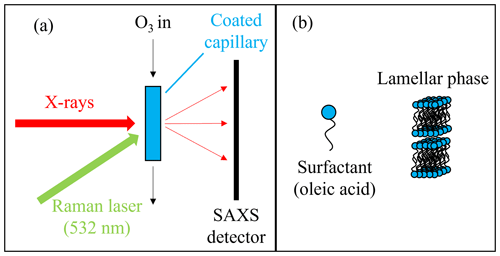料理から発生する有機エアロゾルは、脂肪酸が空気中に放出される際にナノ構造を形成するため、数日間大気中に留まる可能性があります。 Organic aerosols from cooking may stay in the atmosphere for several days because of nanostructures formed by fatty acids as they are released into the air.
2022-04-14 バース大学
これらのエアロゾルが大気中でどのように変化するかを制御するプロセスを明らかにすることで、科学者はエアロゾルが環境や気候に与える影響をより良く理解し予測することができるようになる。
バース大学とバーミンガム大学の専門家は、オックスフォード大学のハーウェルキャンパスにあるダイヤモンド光源と中央レーザー施設の装置を用いて、オレイン酸(料理中によく出る不飽和脂肪酸)の薄い膜の挙動を調べました。
この研究はAtmospheric Chemistry and Physics誌に掲載され、研究者らは、エアロゾルが大気中でどれだけ速く分解されるかを制御する特定の分子特性を分析することができました。
<関連情報>
- https://www.bath.ac.uk/announcements/scientists-discover-a-new-way-to-predict-pollution-from-cooking-emissions/
- https://acp.copernicus.org/articles/22/4895/2022/
調理用エアロゾルの大気中における自己組織化現象の影響について The impact of molecular self-organisation on the atmospheric fate of a cooking aerosol proxy
Adam Milsom, Adam M. Squires, Andrew D. Ward, and Christian Pfrang
Atmospheric Chemistry and Physics Published: 12 Apr 2022
DOI:https://doi.org/10.5194/acp-22-4895-2022

Abstract
Atmospheric aerosols influence the climate via cloud droplet nucleation and can facilitate the long-range transport of harmful pollutants. The lifetime of such aerosols can therefore determine their environmental impact. Fatty acids are found in organic aerosol emissions with oleic acid, an unsaturated fatty acid, being a large contributor to cooking emissions. As a surfactant, oleic acid can self-organise into nanostructured lamellar bilayers with its sodium salt, and this self-organisation can influence reaction kinetics. We developed a kinetic multi-layer model-based description of decay data we obtained from laboratory experiments of the ozonolysis of coated films of this self-organised system, demonstrating a decreased diffusivity for both oleic acid and ozone due to lamellar bilayer formation. Diffusivity was further inhibited by a viscous oligomer product forming in the surface layers of the film. Our results indicate that nanostructure formation can increase the reactive half-life of oleic acid by an order of days at typical indoor and outdoor atmospheric ozone concentrations. We are now able to place nanostructure formation in an atmospherically meaningful and quantifiable context. These results have implications for the transport of harmful pollutants and the climate.



